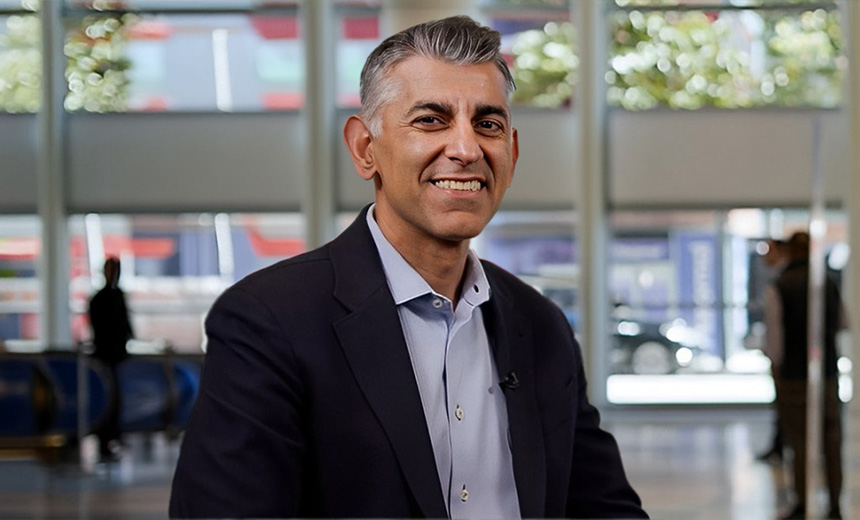

team
meeting
in
the
office.
Woman
presenting
project
to
colleagues
Even
in
an
economic
downturn,
it
continues
to
be
a
good
time
to
be
a
chief
information
officer.
A
new
report
from
research
firm
Foundry
finds
that
77%
of
CIO
respondents
say
their
role
was
actually
elevated
due
to
the
current
state
of
the
economy,
and
this
visibility
within
the
organization
is
expected
to
continue.
Additionally,
38%
of
line
of
business
respondents
view
the
CIO
as
a
strategic
advisor,
proactively
identifying
business
needs
and
opportunities,
and
25%
view
the
CIO
as
a
consultant
who
evaluates
and
advises
on
business
needs
and
tech
choices.
“CIOs
are
balancing
the
persistent
focus
on
transformation
and
modernization
with
a
maturing
leadership
role,
embracing
responsibilities
outside
of
the
traditional
IT
domain
and
cementing
status
as
a
valued
and
strategic
partner
to
the
business,’’
the
report
states.
The
2023
“State
of
the
CIO”
report,
which
surveyed
837
IT
leaders
and
201
line
of
business
participants,
found
that
functional
and
transformational
activities
consumed
the
bulk
of
IT
leaders’
time
this
year,
similar
to
2022.
A
plurality
of
those
surveyed
(38%)
viewed
themselves
as
transformational
CIOs,
while
26%
said
they
were
strategic
and
36%
identified
as
functional,
according
to
the
report.
Jump
to:
CIO
role
is
evolving
with
business
needs
The
focus
on
IT
transformation
“hasn’t
diluted
demand
for
CIO
leadership,
but
rather
enhanced
their
stature
as
a
strategic
advisor
and
consulting
resource,”
the
Foundry
report
said.
More
than
half
of
respondents
(55%)
said
they
proactively
identify
business
opportunities
and
make
recommendations
regarding
technology
and
provider
selections,
while
23%
said
they
evaluate
and
advise
on
business
needs,
technology
choices
and
providers.
Less
than
10%
said
they
serve
as
a
risk
assessor
or
autonomous
player
when
it
comes
to
technology
procurement
decisions.
LOB
respondents
were
pretty
much
in
lockstep
with
that
assessment
of
the
CIO
role:
38%
view
the
top
IT
executive
as
a
strategic
advisor
and
25%
as
a
valued
consultant,
according
to
the
report.
The
CIO
job
continues
to
be
more
digital
and
innovation
focused
—
a
trend
cited
by
85%
of
IT
leaders
and
nearly
three-quarters
(74%)
of
LOB
respondents
involved
in
this
year’s
research.
Organizations
have
come
to
view
the
CIO
role
through
the
lens
of
a
changemaker,
as
cited
by
85%
of
this
year’s
IT
leaders.
A
noteworthy
finding
was
that
the
majority
of
LOB
respondents
recognize
the
CIOs’
transformative
capacity,
but
at
64%,
the
numbers
are
significantly
lower
than
how
technology
leaders
frame
their
own
contributions.
In
terms
of
executive
status,
CIOs
increasingly
report
to
the
CEO
(49%).
This
figure
was
higher
among
IT
leaders
in
the
financial
services
(56%)
and
high-tech
(54%)
sectors
as
well
as
at
SMBs
(57%).
Tech
initiatives
driving
IT
investment
The
technology
initiatives
that
are
expected
to
drive
the
most
IT
investment
in
2023
are:
-
Security
and
risk
management. -
Data
and
business
analytics. -
Application
and
legacy
systems
modernization. -
Machine
learning
and
AI. -
Customer
experience
technologies.
SEE:
Hiring
kit:
Data
scientist
(TechRepublic
Premium)
The
transformation
aspects
of
the
CIO
role
remained
front
and
center,
with
83%
of
IT
leaders
focusing
their
time
on
these
types
of
initiatives.
Modernizing
infrastructure
and
applications
continues
to
be
a
top
priority,
although
less
so
this
year
(35%)
compared
to
the
40%
who
flagged
it
in
the
2022
State
of
the
CIO
research,
the
report
said.
As
with
last
year,
CIOs
were
focused
on
aligning
IT
initiatives
with
business
goals
(38%),
cultivating
the
IT
and
business
partnership
(31%),
and
directing
change
efforts
(28%)
—
all
pointing
to
IT
executives’
maturing
leadership
status,
the
Foundry
report
observed.
The
CIO
as
business
strategist
CIOs
continue
to
take
on
responsibilities
outside
of
the
IT
domain,
specifically
creating
new
revenue-generating
initiatives.
Sixty-eight
percent
of
IT
leaders
confirmed
they
currently
have
some
sort
of
revenue
responsibility,
up
from
65%
in
the
2022
State
of
CIO
survey.
This
is
much
higher
among
IT
leaders
in
the
high-tech
(88%)
and
financial
services
(75%)
industries.
Some
44%
percent
of
IT
leaders
are
managing
a
team
tasked
with
creating
new
revenue-generating
capabilities,
while
another
24%
are
part
of
such
a
team.
In
support
of
making
their
organizations
more
revenue-driven,
CIOs
are
automating
business
and
IT
processes
(47%),
creating
new
products
and
services
(40%),
and
making
data
more
available
(34%).
Conversely,
the
report
also
notes
that
“this
was
another
year
where
IT
leaders
were
able
to
spend
less
time
on
business
strategist
responsibilities
(61%),
which
was
about
the
same
as
2022.”
The
only
exceptions
were
in
the
high-tech
sector
(78%)
and
financial
services
(67%),
where
IT
leaders
cited
activities
like
driving
business
innovation,
developing
and
refining
business
strategy,
and
identifying
opportunities
for
competitive
business
goals
(38%),
cultivating
the
IT
and
business
partnership
(31%),
and
directing
change
efforts
(28%).
This
all
points
to
IT
executives’
maturing
leadership
status,
the
Foundry
report
said.
Much
like
prior
years,
IT
leaders
are
still
struggling
to
find
an
equilibrium
between
business
innovation
and
operational
excellence
—
a
balancing
act
highlighted
by
74%
of
survey
respondents,
higher
among
those
in
manufacturing
(80%),
retail
(80%),
government
(78%)
and
enterprise
organizations
(77%).
Striking
a
balance
appears
to
be
the
ultimate
goal.
“Looking
ahead,
the
pendulum
is
set
to
swing
back
to
CIO
involvement
in
business
strategist
activities,’’
the
report
noted.
“Almost
three-quarters
(71%)
of
respondents
to
this
year’s
survey
expect
to
devote
a
higher
percentage
of
time
to
business
strategist
work
three
years
out.
They
plan
to
focus
on
driving
business
innovation,
developing
and
refining
business
strategy,
identifying
opportunities
for
competitive
differentiation,
and
developing
new
go-to-market
strategies
and
technologies.”









